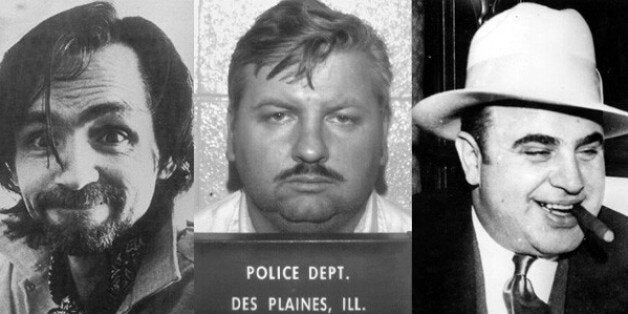
Violence and crime stain the pages of U.S. history, and sadly, they're all but certain to be part of our future.
Still, the criminal mind fascinates us, and you couldn't name or number all the TV shows, movies and novels that all but glamorize true crime.
Selecting 10 of America's most notorious criminals is a daunting task. Of course, there is no single criterion, and morbid factors, such as body count, sadism and notoriety must all be considered. Keeping that in mind, we've assembled a list of some of America's most dangerous and violent villains.

1. Al Capone
Infamous American crime czar Al “Scarface” Capone was once king of the Chicago rackets. A Prohibition-era gangster, he ruled a multimillion-dollar empire in the 1920s that was fueled by illegal booze, gambling and prostitution. Capone is also suspected of being the mastermind behind the 1929 Saint Valentine’s Day Massacre in Lincoln Park that left seven of his enemies dead. Capone’s reign as ruler of Chicago’s gangland ended in 1931 when he pleaded guilty to tax evasion and prohibition charges. After serving seven years and six months in federal prison, which included a stay at Alcatraz, Capone was paroled on Nov. 16, 1939. By that time, however, he suffered from paresis derived from syphilis. Capone went into seclusion at an estate near Miami, Fla., where he died of a stroke and pneumonia on Jan. 25, 1947.

2. Charles Manson
Charles Manson was leader of the Manson Family, a quasi-commune that he formed in California in the late 1960s. Manson believed in an impending apocalyptic race war, which he termed "Helter Skelter." He orchestrated a series of gruesome murders on consecutive nights in an effort to help precipitate the race war. In 1969, Manson and his followers were convicted in the slaying of actress Sharon Tate and several others. Initially sentenced to death, Manson's sentence was later commuted to life in prison. Manson was denied parole for the 12th time in April 2012.

3. Ted Kaczynski
Authorities accused Ted Kaczynski of being the domestic terrorist responsible for more than a dozen bomb attacks in multiple states between 1978 and 1995 that killed three people and injured 23 others. The attacker, who called for the "destruction of the worldwide industrial system," was dubbed the Unabomber because many of his early targets worked at universities and airlines. Investigators zeroed in on Kaczynski after his brother, David Kaczynski, informed the FBI that a manifesto attributed to the Unabomber appearing in The New York Times and The Washington Post was similar to papers his brother had written. Ted Kaczynski was ultimately sentenced to life in prison without the possibility of parole.
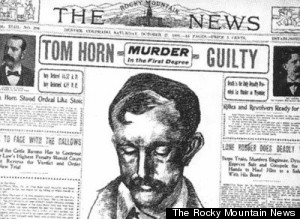
4. Tom Horn
Tom Horn was a man of many hats. He was an Army scout, a lawman, an assassin and an outlaw. His name may not be as well-known as that of Billy the Kid or Jesse James, but he was certainly one of the most cold-blooded killers of the Wild West. During the late 1880s, Horn worked for the Pinkerton Detective Agency as a bounty hunter. While he initially seemed like a good fit, his capacity for violence did not go unnoticed. In 1894, he was forced to resign after he was linked to 17 murders. Stripped of his badge, Horn became a killer-for-hire. His typical target was cattle rustlers and he is believed responsible for the deaths of at least 20 rustlers. In 1901, Horn was linked to the murder of 14-year-old Willie Nickell. The teen was the son of a rancher. Horn's guilt remains a subject of debate for historians. Regardless of his level of responsibility, Horn was executed by hanging in Cheyenne, Wyo., on November 20, 1903, the day before his 43rd birthday.

5. Adam Lanza
Adam Lanza, a 20-year-old recluse from Connecticut, brought terror to Newtown's Sandy Hook Elementary School on Dec. 14, 2012. The troubled young man, armed with a semi-automatic rifle and a handgun, entered the school and fired 154 shots in a span of about five minutes. In the aftermath, 20 first-graders and six educators were left dead. Lanza then took his own life. It was not until later that day that authorities discovered an additional casualty — Lanza's mother, Nancy. He had killed her in their Newtown home prior to the school shooting.
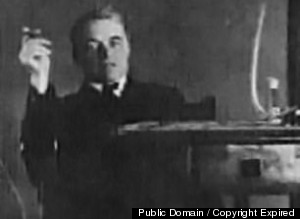
6. Andrew Kehoe
The deadliest mass murder at a U.S. elementary school occurred in Bath Township, Michigan, in 1927. Andrew Kehoe, a 55-year-old school board treasurer and farmer, was supposedly angry about his financial troubles and his defeat in an election for township clerk. On May 18, 1927, Kehoe used timed detonators to trigger several incendiary devices he had planted inside Bath Consolidated School. The resulting explosion destroyed much of the school and claimed the lives of 43 people, including 38 children. Kehoe took his own life by detonating dynamite in his truck. Prior to the bombing, Kehoe had killed his wife and set off incendiary devices at his farm, destroying his home and all the buildings. In the aftermath, investigators found a wooden sign Kehoe had apparently wired to a fence on his farm that read, "Criminals are made, not born."

7. John Wayne Gacy
John Wayne Gacy was convicted of murdering 33 young men and boys between 1972 and 1978. Most of the bodies were found buried underneath the crawl space of his Chicago-area home. At the time of his arrest, Gacy claimed he was responsible for at least 45 murders. Gacy was given the nickname "The Killer Clown," because he sometimes adopted the persona of "Pogo the Clown" and participated in charity fundraising events. He was ultimately sentenced to death and executed at the Stateville Correctional Center in 1994 by lethal injection. His notorious last words: "Kiss my ass."
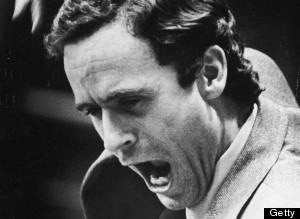
8. Ted Bundy
In the 1970s, Ted Bundy had a bright future in the Washington State Republican Party; instead, he became one of the most famous serial killers and necrophiliacs in U.S. history. He often deceived his victims, all women, into thinking that he was injured and in need of help before attacking them. In 1976, he was arrested for an attempted kidnapping, but while acting as his own lawyer, he escaped. He migrated to Florida, where he killed two women in a Florida State University sorority house and 12-year-old Kimberly Diane Leach. He was convicted of those murders and, while on death row in 1989, he confessed to 50 other murders. The true total remains unknown. Bundy died in the electric chair at Raiford Prison in Starke, Fla., on Jan. 24, 1989.
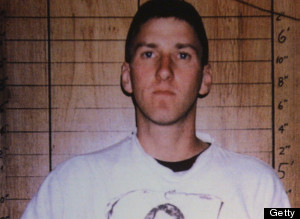
9. Timothy McVeigh
A homegrown terrorist, Timothy McVeigh detonated a truck bomb in front of the Alfred P. Murrah Federal Building in Oklahoma City on April 19, 1995. The attack, commonly referred to as the Oklahoma City bombing, claimed the lives of 168 people, including 19 children. A Gulf War veteran, McVeigh was seeking revenge against the federal government for the 1993 siege of a compound belonging to the religious group Branch Davidians in Waco, Texas. The siege ended in the deaths of sect leader David Koresh and 75 of his followers. The bombing of the Murrah building took place on the two-year anniversary of the Davidians' deaths. McVeigh was convicted of 11 federal offenses and was executed on June 11, 2001.

10. Jim Jones
Jim Jones, the founder and leader of the Peoples Temple, fled California in 1974 with his followers and set up a compound in Guyana, which he dubbed Jonestown. Jones, a charismatic and disturbed individual, had become paranoid that the CIA and FBI were watching him. Jones ruled his community with an iron fist and did not permit anyone to leave. His actions made it back to officials in the U.S. and, on November 18, 1978, California Congressman Leo J. Ryan paid a visit to Jonestown. After touring the facility, Ryan left the compound with a number of defectors. Angered, Jones sent some of his men to the airstrip in Port Kaituma, where they gunned down Ryan and four others. Later that same day, 909 of Jones' followers, 303 of which were children, died of apparent cyanide poisoning. Jones died from a gunshot wound to the head consistent with suicide. "We didn’t commit suicide; we committed an act of revolutionary suicide protesting the conditions of an inhumane world," Jones said in a 45-minute audio recording that was made that day. The incident was, until Sept. 11, 2001, the single greatest loss of American civilian life in a non-natural disaster.

Leave a comment below on who you think is among the most notorious criminals in American history.
